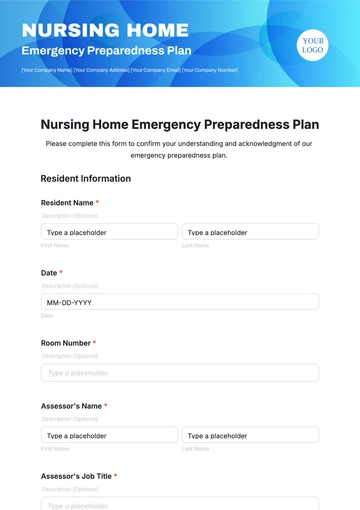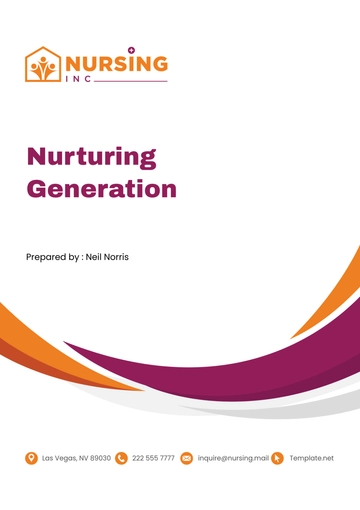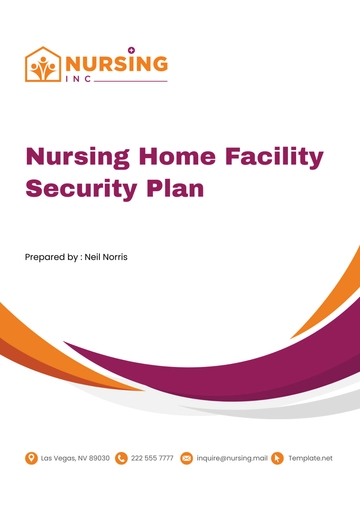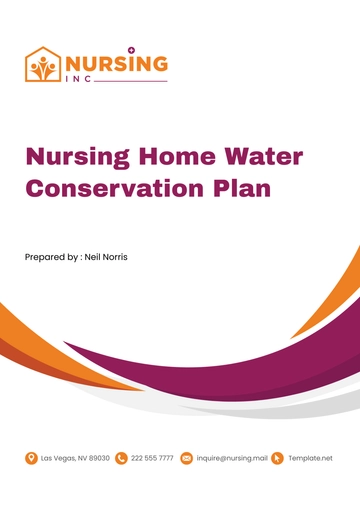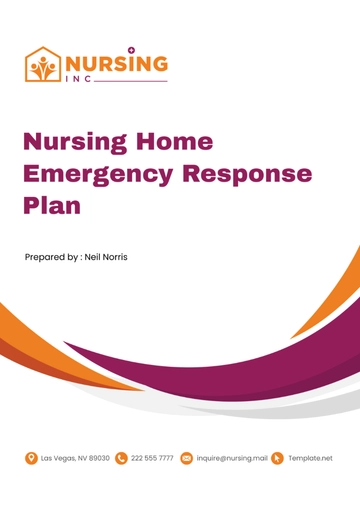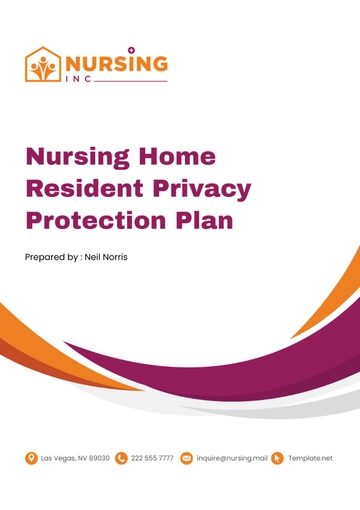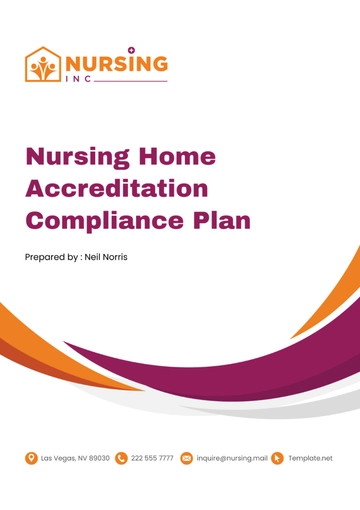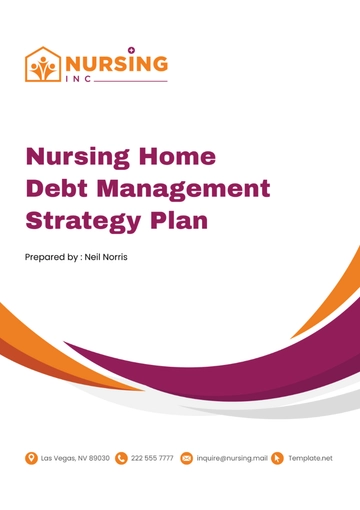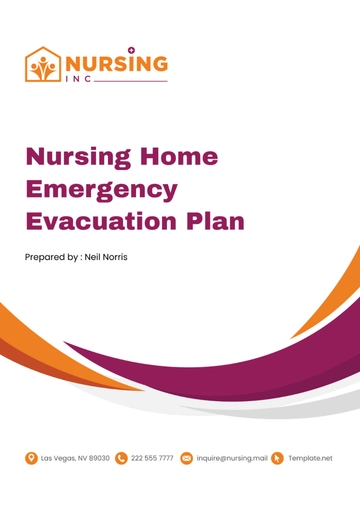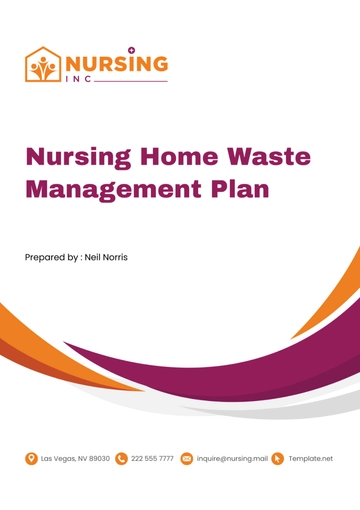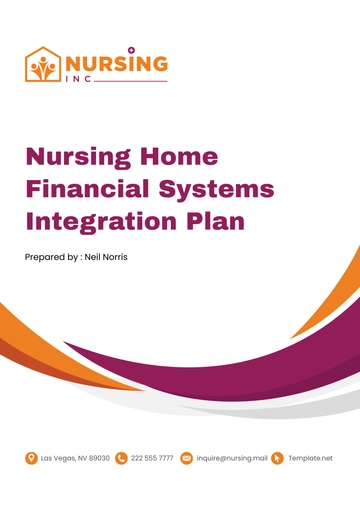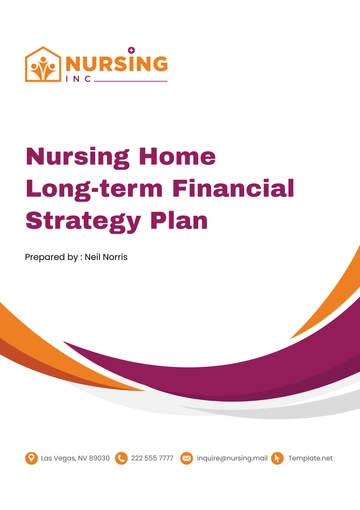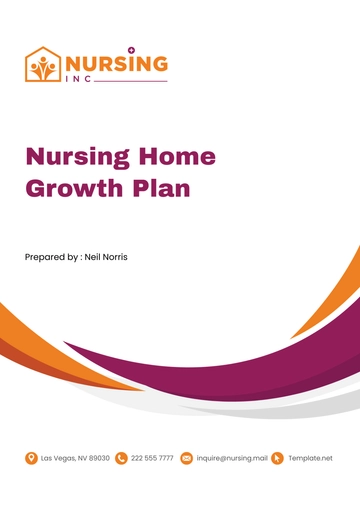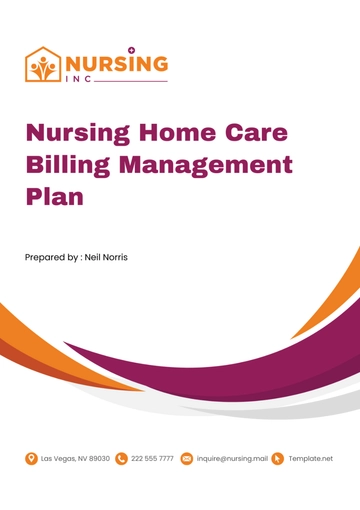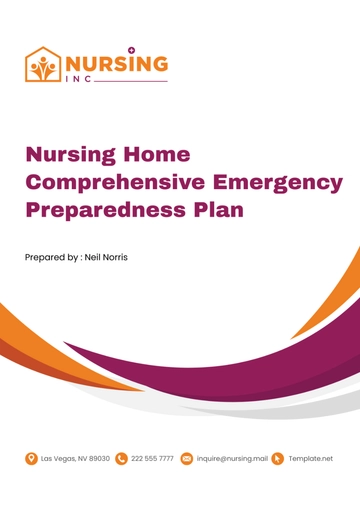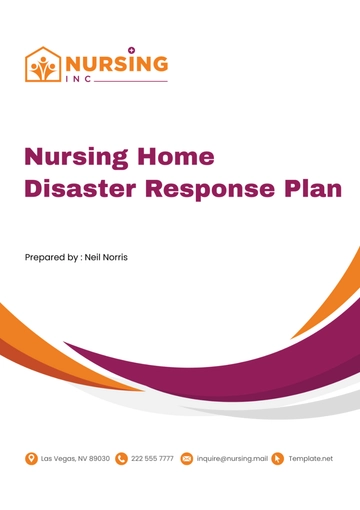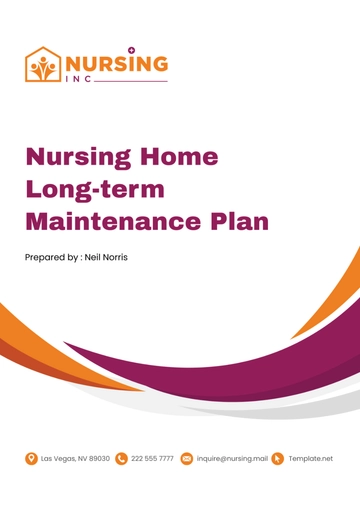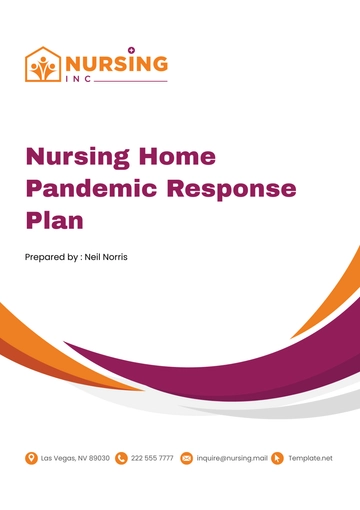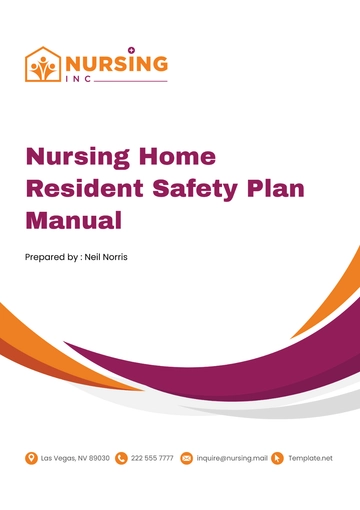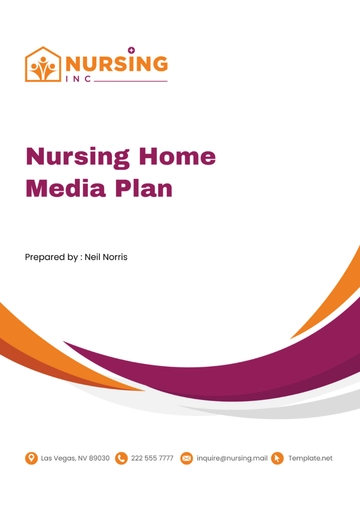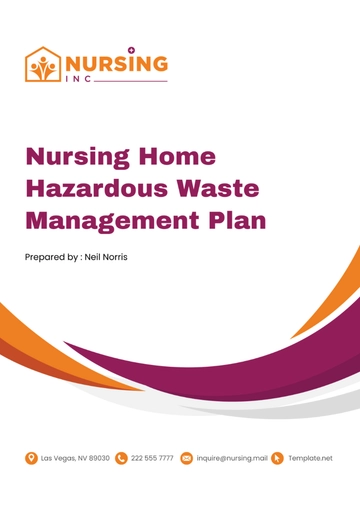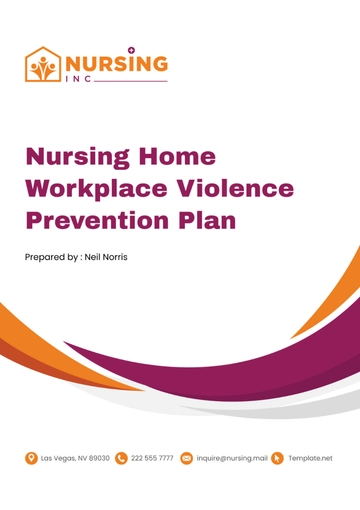Free Nursing Home Handover Plan
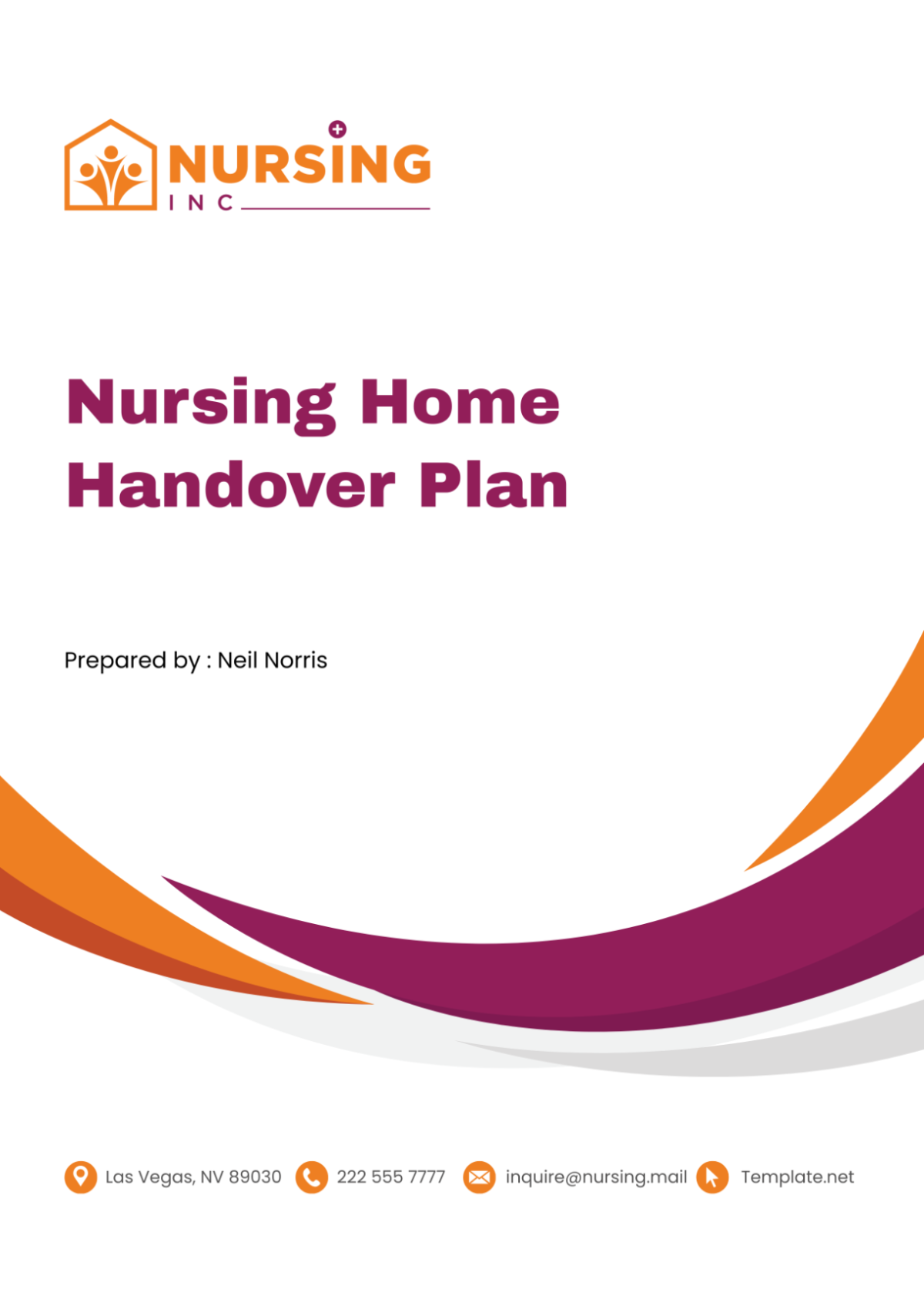
1. Introduction
Purpose of the Handover Plan
The primary goal of the Nursing Home Handover Plan at [Your Company Name] is to ensure a seamless transition between shifts, guaranteeing continuity of care for all residents. This plan aims to systematically convey critical information about residents' health status, care plans, medication requirements, and any incidents or notable events from one shift to the next. By standardizing the handover process, we aim to minimize errors, enhance the quality of care, and ensure the safety and well-being of all residents under our care.
Scope
This Handover Plan covers all aspects critical to resident care, including but not limited to:
Individual care plans and health status updates
Medication management details
Completed and pending tasks
Incident reports and necessary follow-up actions
Communications from residents and their families
2. Handover Process Overview
Frequency and Timing
Handovers are scheduled to occur at the end of each shift, lasting approximately 30 minutes to ensure a thorough exchange of information. The timings are set as follows:
Morning Shift to Afternoon Shift: 2:45 PM - 3:15 PM
Afternoon Shift to Night Shift: 10:45 PM - 11:15 PM
Night Shift to Morning Shift: 6:45 AM - 7:15 AM
Format
The handover will utilize a combined format of oral and written communication, supported by digital tools:
Oral Briefing | Direct communication between outgoing and incoming staff members. |
Written Documentation | Handover sheets and notes prepared by the outgoing shift. |
Digital Tools | Use of the Electronic Health Record (EHR) system for up-to-date resident information and handover logs. |
3. Roles and Responsibilities
Role | Responsibilities |
|---|---|
Outgoing Staff |
|
Incoming Staff |
|
4. Key Components of a Handover
Resident Information
Specific Observations: Note any subtle changes in residents’ behaviors or physical conditions that may indicate emerging health issues, such as decreased appetite or increased lethargy.
Social and Emotional Well-being: Update on residents’ participation in activities, changes in social interactions, or any observed shifts in mood or behavior.
Medication Management
Adverse Reactions: Document any adverse reactions to medications observed during the shift, including the time of onset and measures taken in response.
Special Precautions: Highlight any residents with specific precautions or monitoring required post-medication administration, especially for new prescriptions or dosage changes.
Tasks and Responsibilities
Specific Instructions for Care: Detailed instructions for care tasks that require special attention or technique, such as wound care procedures or mobility support for high-risk residents.
Resource Availability: Information on the availability of necessary resources, including medical supplies or equipment needed for the upcoming shift.
Incidents and Responses
Response Team Feedback: Insights from any response team interventions, including recommendations for ongoing care or observation of affected residents.
Preventative Measures: Suggestions for preventative measures to avoid similar incidents in the future, based on lessons learned.
Communication between Residents and Families
Upcoming Family Visits: Schedule of expected family visits or video calls that may require staff coordination or preparation.
Resident Concerns and Preferences: Any changes in resident preferences or expressed concerns that need to be addressed or monitored for satisfaction.
5. Handover Documentation
Templates and Tools
Digital Handover Checklist: The Electronic Health Record (EHR) incorporates an interactive checklist. This checklist is designed to assist outgoing staff members during the handover process by guiding them through each section meticulously. The main purpose of this checklist is to ensure that no critical information is overlooked or missed out during the transition period. It systematically walks the staff through all necessary steps, enabling a thorough and complete handover of essential information.
Feedback Section: A dedicated section in the handover documentation for incoming staff to provide feedback on the completeness and clarity of the handover, to be reviewed by supervisors for quality improvement.
Confidentiality and Security
Handover Area: The facility designates a specific area devoted to handover discussions. This distinctive area is furnished with privacy screens and acoustically soundproofed, thus providing an environment that supports and maintains the confidentiality of these critical discussions.
Digital Security Measures: The implementation process includes advanced security measures for Electronic Health Records (EHR). These security measures encompass two-factor authentication procedures and maintaining access logs. Both of these steps are crucial in monitoring and safeguarding handover information, to ensure a highly secure and transparent process.
6. Training and Competency
Handover Training
Simulation Exercises: It is important to regularly conduct simulation exercises that accurately replicate real-life scenarios. These exercises will provide staff with opportunities to practice the handover process. Furthermore, these practices will be undertaken in a controlled environment, offering a safe space for trial and error, thereby enhancing the efficiency and efficacy of the actual handover process when executed in real-life situations.
Peer Mentoring: As part of our onboarding process, we find it immensely beneficial to pair our new hires with staff members who have a considerable amount of experience. This pairing allows for what we refer to as 'handover mentoring', a process through which our newer employees can rapidly acquire the skills and knowledge necessary for their roles. Furthermore, this process also facilitates the transfer of knowledge from our more seasoned staff members to their junior colleagues. Lastly, it also greatly aids in reinforcing the best practices that we have established in our company, ensuring that all staff members are well acquainted with these processes and techniques.
Competency Assessments
Feedback from Residents and Families: Incorporate feedback from residents and families as part of the competency assessment, evaluating the impact of handovers on resident satisfaction.
Annual Handover Competency Certification: We are considering the implementation of an annual certification process. This would require staff members to regularly demonstrate their proficiency and competence in the handover process. By doing so, they will be able to maintain the validity of their certification status throughout the year. This practice we believe will enhance the overall efficiency of our operations.
7. Quality Assurance
Monitoring and Evaluation
Handover Satisfaction Survey: Distribute a quarterly survey to staff, residents, and families to gauge satisfaction with the handover process and identify areas for improvement.
Incident Correlation Analysis: Perform a bi-annual analysis of incidents in relation to handover effectiveness, identifying any trends that suggest areas needing focus in handover training or procedures.
Feedback Mechanism
Annual Handover Process Review Meeting: Every year, we should organize a meeting with a sole focus on reviewing the processes involved in handovers. During this meeting, all staff members, from entry-level to upper management, should have an active involvement. We believe not only in sharing our experiences and challenges but also in encouraging each other to put forth any suggestions or recommendations they might have for refining the improvement process. The ultimate goal of this endeavor is for our organization to be continually improving and adapting to dynamic needs and situations.
8. Review and Update Process
At [Your Company Name], we are committed to continuous improvement and adaptability in our processes, including the crucial handover procedures that underpin the quality of care our residents receive. To ensure our Handover Plan remains effective and reflects best practices, current regulations, and the needs of our community, we have established a structured review and update process. Annually, our management team, in collaboration with a Change Management Team consisting of nursing staff, administrators, and resident advocates, undertakes a comprehensive review of the Handover Plan. This review integrates direct feedback from our annual handover process review meeting, insights from quarterly satisfaction surveys, and analysis of incident correlation data. Such a holistic approach ensures that every aspect of our handover process is scrutinized for potential improvement.
Following the review, the Change Management Team is responsible for implementing updates to the plan. Updates might include adjustments to procedures, the introduction of new tools or technologies, or enhancements to training programs. To effectively communicate these changes to all staff, we employ a multi-faceted communication strategy. This strategy encompasses staff training sessions focused on new procedures, informational posters placed throughout the facility to remind staff of key points, and detailed updates in our staff newsletter. Our goal through these efforts is not just to maintain compliance with evolving standards but to foster an environment of excellence in care through efficient and effective handovers.
9. Conclusion
This Nursing Home Handover Plan for [Your Company Name] is designed with the dual purpose of ensuring the highest standards of resident care and maintaining an environment of continuous improvement and collaboration among our staff. By emphasizing detailed communication, comprehensive training, and a robust feedback and review process, we set a foundation for excellence in care delivery. This plan not only meets the practical needs of day-to-day operations but also reflects our deep commitment to the well-being and satisfaction of our residents and their families. As we move forward, [Your Company Name] remains dedicated to adapting, refining, and enhancing our practices to meet the evolving needs of those we serve, ensuring that our handover process continually supports our mission of providing outstanding care and support to our residents.
- 100% Customizable, free editor
- Access 1 Million+ Templates, photo’s & graphics
- Download or share as a template
- Click and replace photos, graphics, text, backgrounds
- Resize, crop, AI write & more
- Access advanced editor
Smooth transitions are key with Template.net's Nursing Home Handover Plan Template. Designed for seamless staff changes and information transfer, this template is fully customizable and editable using our Ai Editor Tool. Ensure continuity of care and operational efficiency during shifts or staff changes. An essential tool for effective management in nursing homes, exclusively at Template.net.
You may also like
- Finance Plan
- Construction Plan
- Sales Plan
- Development Plan
- Career Plan
- Budget Plan
- HR Plan
- Education Plan
- Transition Plan
- Work Plan
- Training Plan
- Communication Plan
- Operation Plan
- Health And Safety Plan
- Strategy Plan
- Professional Development Plan
- Advertising Plan
- Risk Management Plan
- Restaurant Plan
- School Plan
- Nursing Home Patient Care Plan
- Nursing Care Plan
- Plan Event
- Startup Plan
- Social Media Plan
- Staffing Plan
- Annual Plan
- Content Plan
- Payment Plan
- Implementation Plan
- Hotel Plan
- Workout Plan
- Accounting Plan
- Campaign Plan
- Essay Plan
- 30 60 90 Day Plan
- Research Plan
- Recruitment Plan
- 90 Day Plan
- Quarterly Plan
- Emergency Plan
- 5 Year Plan
- Gym Plan
- Personal Plan
- IT and Software Plan
- Treatment Plan
- Real Estate Plan
- Law Firm Plan
- Healthcare Plan
- Improvement Plan
- Media Plan
- 5 Year Business Plan
- Learning Plan
- Marketing Campaign Plan
- Travel Agency Plan
- Cleaning Services Plan
- Interior Design Plan
- Performance Plan
- PR Plan
- Birth Plan
- Life Plan
- SEO Plan
- Disaster Recovery Plan
- Continuity Plan
- Launch Plan
- Legal Plan
- Behavior Plan
- Performance Improvement Plan
- Salon Plan
- Security Plan
- Security Management Plan
- Employee Development Plan
- Quality Plan
- Service Improvement Plan
- Growth Plan
- Incident Response Plan
- Basketball Plan
- Emergency Action Plan
- Product Launch Plan
- Spa Plan
- Employee Training Plan
- Data Analysis Plan
- Employee Action Plan
- Territory Plan
- Audit Plan
- Classroom Plan
- Activity Plan
- Parenting Plan
- Care Plan
- Project Execution Plan
- Exercise Plan
- Internship Plan
- Software Development Plan
- Continuous Improvement Plan
- Leave Plan
- 90 Day Sales Plan
- Advertising Agency Plan
- Employee Transition Plan
- Smart Action Plan
- Workplace Safety Plan
- Behavior Change Plan
- Contingency Plan
- Continuity of Operations Plan
- Health Plan
- Quality Control Plan
- Self Plan
- Sports Development Plan
- Change Management Plan
- Ecommerce Plan
- Personal Financial Plan
- Process Improvement Plan
- 30-60-90 Day Sales Plan
- Crisis Management Plan
- Engagement Plan
- Execution Plan
- Pandemic Plan
- Quality Assurance Plan
- Service Continuity Plan
- Agile Project Plan
- Fundraising Plan
- Job Transition Plan
- Asset Maintenance Plan
- Maintenance Plan
- Software Test Plan
- Staff Training and Development Plan
- 3 Year Plan
- Brand Activation Plan
- Release Plan
- Resource Plan
- Risk Mitigation Plan
- Teacher Plan
- 30 60 90 Day Plan for New Manager
- Food Safety Plan
- Food Truck Plan
- Hiring Plan
- Quality Management Plan
- Wellness Plan
- Behavior Intervention Plan
- Bonus Plan
- Investment Plan
- Maternity Leave Plan
- Pandemic Response Plan
- Succession Planning
- Coaching Plan
- Configuration Management Plan
- Remote Work Plan
- Self Care Plan
- Teaching Plan
- 100-Day Plan
- HACCP Plan
- Student Plan
- Sustainability Plan
- 30 60 90 Day Plan for Interview
- Access Plan
- Site Specific Safety Plan
